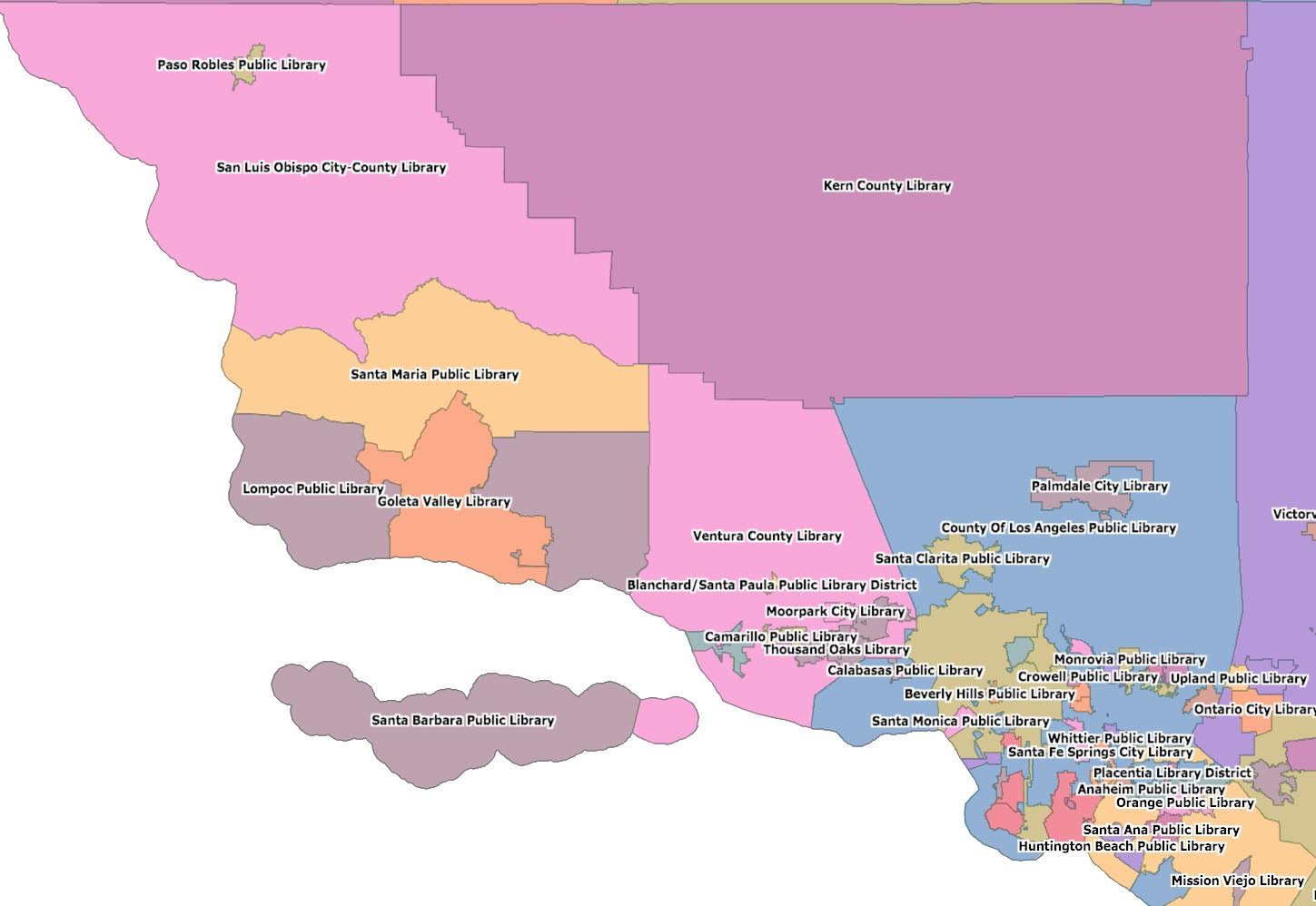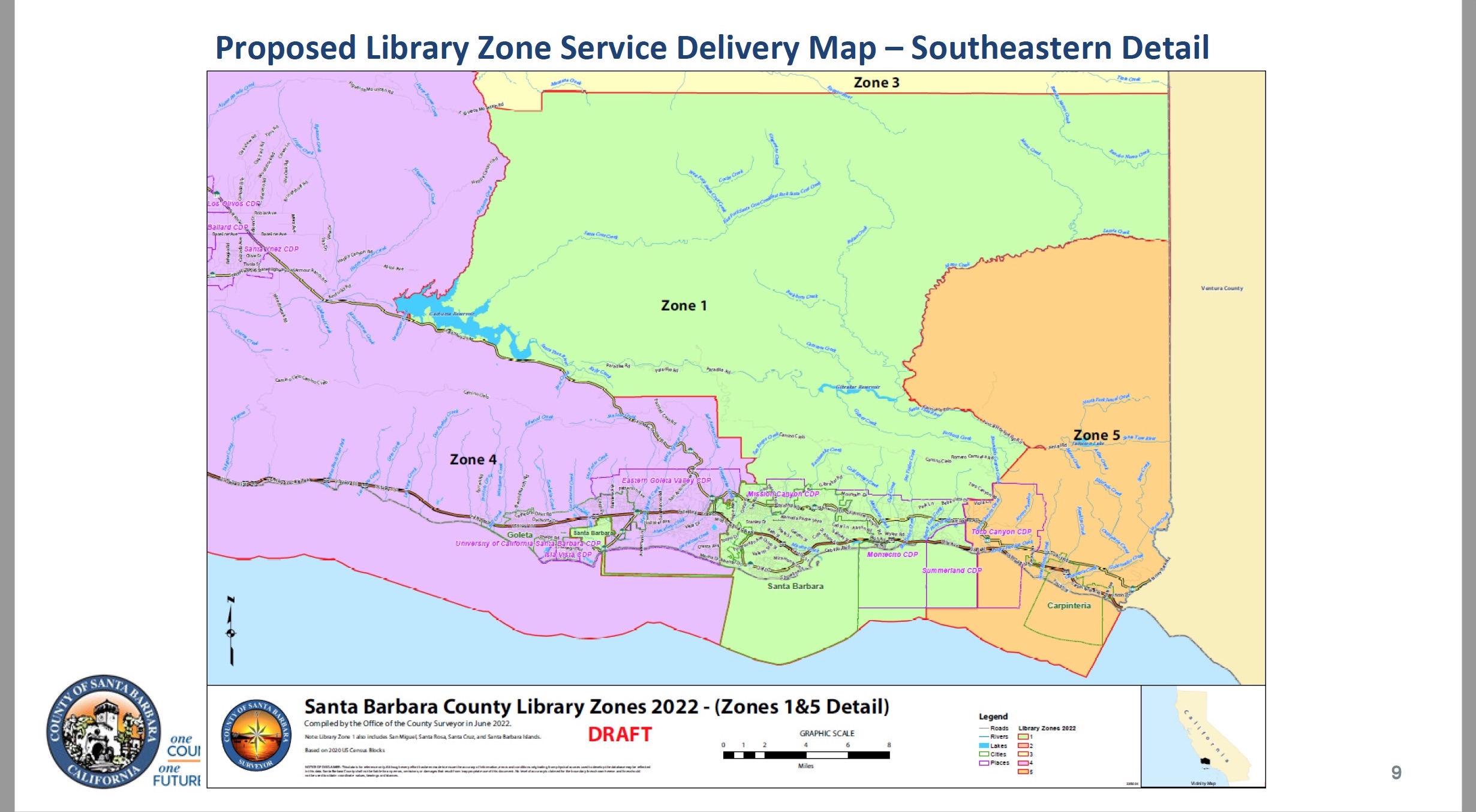Carpinteria to Celebrate New Library Status
California’s Oldest Branch Library Leaves Santa Barbara System to Form Municipal Library

As Carpinteria plans a big party for this Saturday to celebrate its new municipal library, some good news came on Tuesday, when the Board of Supervisors approved a 3.8 percent increase in library funding from the County of Santa Barbara. Both bits of news are a welcome contrast to the recent history of acrimony among the South County libraries.
Opened in 1910, Carpinteria’s is the oldest branch library in California, and it operated under the umbrella of its parent Santa Barbara city library system until June 30 of this year. Carpinteria Library Director Jody Thomas explained why the separation took place, saying, “It didn’t come about in order to save money, but to have more autonomy in the operations, direction, and strategic plans for the future.”

Another former branch library — Goleta’s — gave much the same reasons when it left the Santa Barbara system in 2017, also taking the Buellton and Solvang branches with it. Carpinteria and Montecito libraries are having conversations about linking together, although the funding needs to be worked out, said Pat Saley, president of the Friends of the Montecito Library fundraising nonprofit.
Despite the demand for the libraries’ many free services — which stretch beyond books and literacy to computer skills, résumé preparation, summer lunches for kids, or just a pleasant conversation — the financial plight among all libraries has been a nationwide issue of many years’ standing. Though next year’s state budget includes $439 million to California libraries, it puts a small dent in a $5 billion backlog of needs from when state funding was scaled back severely a decade ago.
Locally, things came to a head over the administration fee the City of Santa Barbara charged its branch libraries. The city’s first Free Public Library started in 1882, and as the area grew, branch libraries sprouted. The admin fee had remained the same for so long that no one remembered what charges it represented. With branches from Carpinteria to Buellton, Santa Barbara began asking why it should underwrite other cities’ libraries; five years ago, it proposed a steep increase to the administration fee to try to recoup its funding. A half-dozen branch libraries pushed back and questioned the basis for the long-standing fee, in part because their reserves were headed toward zero.
The county stepped up with a special small libraries fund, and this year added $658,000 from cannabis taxes to the library budgets. The various cities that administer the library zones — Santa Maria, Lompoc, Santa Barbara, Goleta, and now Carpinteria — also put a good quantity of funding toward their libraries, as do property taxpayers in some zones, and Friends of the Libraries through donations and fundraisers.

Carpinteria residents campaigned in 2018 to pass a 1.25 percent sales tax, selling it as for the library, Thomas said, as well as for law enforcement, water quality, and other needs. Measure X added $568,550 to the library’s budget. Renovation costs for the library received a major boost from the LaCentra-Sumerlin Foundation, which gave the library a gift of $175,000.
“The renovated Carpinteria Community Library looks really fresh and feels welcoming,” Thomas said, and it now has more powerful Wi-Fi throughout the building, front porch, and back patio.
The latest controversy to rock the libraries is the departure of Santa Barbara from the Black Gold cooperative book-sharing collective. The break coincided with Carpinteria leaving S.B.’s system, and Thomas said library patrons were asking if they could still borrow from among the half-million titles available through Black Gold. For people with a library card for Carpinteria — or for Goleta, which is also staying with Black Gold — they can continue to use Black Gold’s services, she said. San Luis Obispo County also left Black Gold, but as far as its collection goes, S.L.O. has close to 300,000 titles. Santa Barbara, on the other hand, has 117,000 print materials on hand, according to state library statistics.

The changes to the library systems may just keep coming. At Tuesday’s meeting, Supervisor Bob Nelson asked why Santa Barbara’s library zone of operations reached above Carpinteria’s and over to the Ventura County border. Did they want to go to another county? Nelson wondered.
Ryder Bailey, chief financial officer for county Community Services, indicated that Santa Barbara had talked about sharing resources with another jurisdiction, “but I don’t know that is happening today.”

Correction: In the discussion of why Carpinteria left the Santa Barbara library system, we incorrectly cited cost as a factor; the split from Santa Barbara was not due to costs, but was a matter of autonomy.
Support the Santa Barbara Independent through a long-term or a single contribution.




You must be logged in to post a comment.